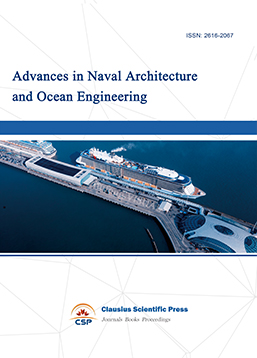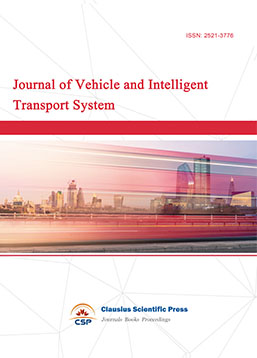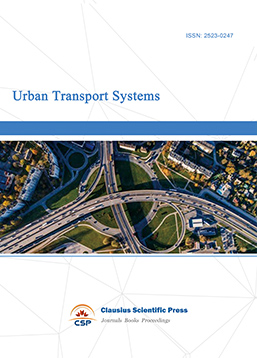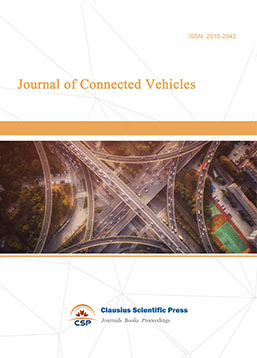Research on Coordinated Development of Traffic Accessibility and Urban Economy under the Background of High-speed Rail Network
DOI: 10.23977/ftte.2022.020102 | Downloads: 13 | Views: 960
Author(s)
Feng Xu 1,2
Affiliation(s)
1 School of Economics & Management, Nanjing Institute of Technology, Nanjing, China
2 College of Economics & Management, Nanjing University of Aeronautics and Astronautics, Nanjing, China
Corresponding Author
Feng XuABSTRACT
In order to promote the coordinated development of traffic accessibility and urban economy under the background of high-speed rail network, the weighted average travel time, economic potential index, total economic linkages and coupling coordination degree were taken as the measurement indexes. Taking Jiangsu Province as an example, the high-speed rail traffic accessibility, the coupling coordination degree between the traffic accessibility and urban economy were quantitatively measured. The results showed that the average coordination degree between high-speed rail accessibility and urban economy in Jiangsu Province was 0.6568, which meant a medium level of coordination. However, the degrees of coupling coordination between high-speed rail traffic accessibility and urban economy of different cities in Jiangsu Province were unbalanced, different countermeasures should be adopted for cities with different coordination levels. Specifically, the coupling coordination degrees of Suzhou, Wuxi and Changzhou in southern Jiangsu were at a high level of coordination, and the economic radiation of the three central cities should be further enhanced. The coordination levels of Nanjing, Zhenjiang and Yangzhou in central Jiangsu were moderate, and the three cities’ strength of economic ties with other cities should be established and enhanced; the coordination levels of Xuzhou, Suqian, Huai'an and Yancheng in northern Jiangsu were low, the coordination state of Taizhou and Nantong was mild disorder, the construction of transportation facilities of the these cities should be strengthened and the intensity of accepting the economic radiation of the core cities should be improved.
KEYWORDS
Traffic accessibility, urban economy, coordinated development, degree of coupling coordinationCITE THIS PAPER
Feng Xu, Research on Coordinated Development of Traffic Accessibility and Urban Economy under the Background of High-speed Rail Network. Frontiers in Traffic and Transportation Engineering (2022) Vol. 2: 8-14. DOI: http://dx.doi.org/10.23977/ftte.2022.020102.
REFERENCES
[1] Hansen, Walter G. (1959) How accessibility shapes land Use. Journal of the American Institute of Planners, 25, 2, 73-76.
[2] BLANQUART C, IRONING M. (2017) The local economic impacts of high-speed railways: Theories and facts. European Trans-Port Research Review, 9, 2, 12.
[3] HIRAMATSU T. (2018) Unequal regional impacts of high speed rail on the tourism industry: A simulation analysis of the effects of Kyushu Shinkansen. Traffication, 45, 2, 677-701.
[4] WANG Zhenhua, LIU Qiaochu, JIANG Jinqi. (2021) Traffic Accessibility, Industrial Agglomeration and Regional High Quality development. Soft Science, 35, 12, 56-61.
[5] WU Yidan, SUN Hong, ZHANG Peiwen. (2021) Coupling Coordination Degree Between Transport Accessibility and Economic Development Level: A Case Study of Sichuan Province. Transport Research, 7, 5, 19-26.
[6] YU Shangkun, WANG Chengxin, MIAO Yi, WANG Chao. (2019) Analysis on the Relationship Between Regional Comprehensive Traffic Accessibility and Economic Development—Taking Shandong Province as an Example. Journal of Natural Science of Hunan Normal University, 42, 4, 26-33.
[7] HU Mingwei, WU Wenlin, ZHAO Qian, HE Guoqing. (2022) Analysis on the relationship between accessibility of intercity rail transit and urban economic development. Journal of Shenzhen University (Science and Engineering), 39, 3, 287-295.
[8] FENG Xiaobing. (2022) Research on the Coupling and Coordinated Development of Transportation and Regional Economy in Chengdu—Chongqing Area. Railway Transport and Economy, 44, 3, 92-98.
[9] JIANG Ce. (2016) Study on transportation accessibility of cities and regional economic coordinative development. Journal of Shenyang University of Technology (Social Sciences), 9, 2, 132-136.
[10] ZHU Yuting, LIU Ying, XU Qi, et al. (2020) Spatial Characteristics Analysis of Traffic Accessibility and City Economic Activity:A Case Study of Beijing. Journal of Transportation Systems Engineering and Information Technology, 20, 5, 226-233.
| Downloads: | 112 |
|---|---|
| Visits: | 9381 |

 Download as PDF
Download as PDF


